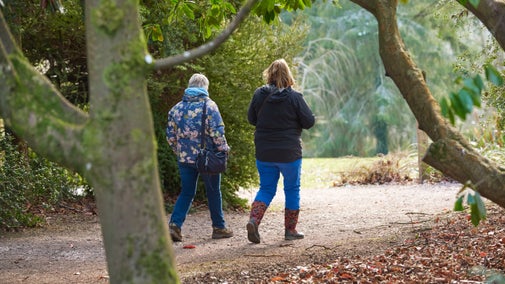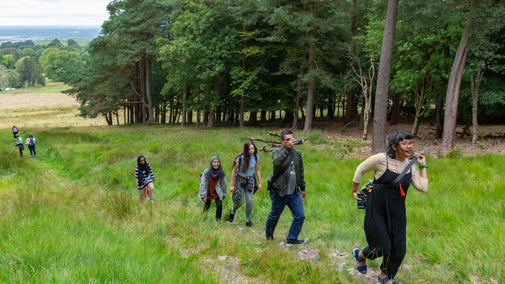Wembury Beach to Heybrook Bay circular walk
Devon
This moderate coastal walk passes through a wildlife-rich Site of Special Scientific Interest and the former HMS Cambridge base, before looping back to take in dramatic views of the Great Mewstone.
Near to
WemburyStart point
Wembury Beach National Trust car park, grid ref SX515485Trail information
Please be aware of livestock
Be aware that you may encounter livestock, which can include ponies, on this route. Please follow the guidance of onsite signage and take any dog waste away with you or place in the bins provided.
More near here
Revelstoke Drive and Noss Mayo walk
A lovely walk all year round, starting from Warren, about 10 miles from Wembury, with far-reaching coastal views, woodland leading right down to the estuary edge and the beautiful village of Noss Mayo.

A short coastal walk at Stoke Point
This clifftop walk down to a picturesque viewpoint offers dramatic vistas and a chance to spot rare birds and marine life – especially if you bring your binoculars.

Get in touch
Our partners

We’ve partnered with Cotswold Outdoor to help everyone make the most of their time outdoors in the places we care for.
You might also be interested in
Things to do at Wembury
From water sports on the beach to rock-pooling with the family, discover the adventures to be had when you visit Wembury and the surrounding areas.

History of Wembury
Discover the history of Wembury and the Great Mewstone, from holiday camp and inspiration for the famous Forsyte Saga, to major naval gunnery school.

Walking in Devon
From rugged coastline with captivating views to gentle woodland strolls, these are some of the best walks in Devon this winter.

Cotswold Outdoor: our exclusive walking partner
Learn about the National Trust’s ongoing partnership with Cotswold Outdoor. Find out how they help us care for precious places and the exclusive discount available for National Trust supporters.

Staying safe at National Trust places
The special places in National Trust care sometimes come with a few risks for visitors, be it coastline or countryside. Find out how to keep safe throughout your visits.

Follow the Countryside Code
Help to look after National Trust places by observing a few simple guidelines during your visit and following the Countryside Code.

Walking
Explore some of the finest landscapes in our care on coastal paths, accessible trails, woodland walks and everything in between. Find the best places to walk near you.


